| Web
and Book design,
Copyright, Kellscraft Studio 1999-2008 (Return to Web Text-ures) |
 (HOME)
|
OLD FASHIONED GABLES WE have scattered through our pages
various sketches of ancient roof lines
in Nantucket and elsewhere. The outline here of a gambrel, there of a pointed
roof, there of a lean-to, and various combinations or ranks of these shapes as
they range back, one behind the other, when one looks down upon an ancient
town, constitutes its chief charm when seen as a whole. Peeping through the
branches of lofty trees or half hidden behind one another they call out
protective and homing instincts. These roofs are best seen, perhaps, in Siasconset,
though some Cape villages afford fine groupings of this sort. On the North Shore one sees
statelier three story houses, as in Salem and Newburyport. They are of a later
and more pretentious period but in their ample size remind us of the large families
then prevalent. Containing as they did twelve rooms and three great hall-ways,
besides, often, a series of side halls, they were almost institutions in
themselves. In the typical house there was no L. On one side there was the
dining room and kitchen and on the other the front and back parlors with eight
chambers on the two stories above. The outlines of a detached homestead
are often sufficiently alluring to detain us. There seemed to be a feeling that
if one wanted room the thing to do was to build on rather than to repair
whatever existed. The writer remembers many times in his childhood hearing
farmers say "It is not worth repair" of some old shed. Instead,
however, of removing that shed, another was added to it and we recollect houses
on which five generations, at least, have tried their hand until the result is
a marvelous up and down and in and out and back and forth of roof line. If
these lines are softened by overhanging trees they are often very graceful.
Otherwise they cause us to lament the lack of unity. That very lack, however,
to some minds constitutes a charm. There is at Hanover Four Corners a house
said to have three stories on one floor. It is all, indeed, built upon the
ground, but on a declivity so that one goes up and down stairs to three levels,
which are, nevertheless, all on the lower story. Novelists have ever raved over
rambling houses. They are, indeed, wonderful for children who would play hide
and seek and rummage among the shed roofs of the successive disorders of architecture.
If such old gables are crowned with stately chimneys and none of your modern
spindling affairs that disgrace the name, their outlines are very satisfactory.
The coloring of the old brick, mingled with the gray-green of old shingles and
topping some weathered gable that has met successfully the storms of two
hundred New England winters, creates an ensemble capable of enthralling the
traveler. We asked at such a house, "Have you had many opportunities to sell?" "Every week," was the reply, "through the season, we are besought to dispose of the place." No longer need we be anxious regarding the tumbled-down farmsteads of New England. Our only anxiety will be to secure the wherewithal to purchase them. Yet when all is said there are many owners who will neither sell nor restore but allow their old homes to fall about their ears. It is another proof that one's own interest cannot be trusted as a sufficient stimulus to care for one's property. 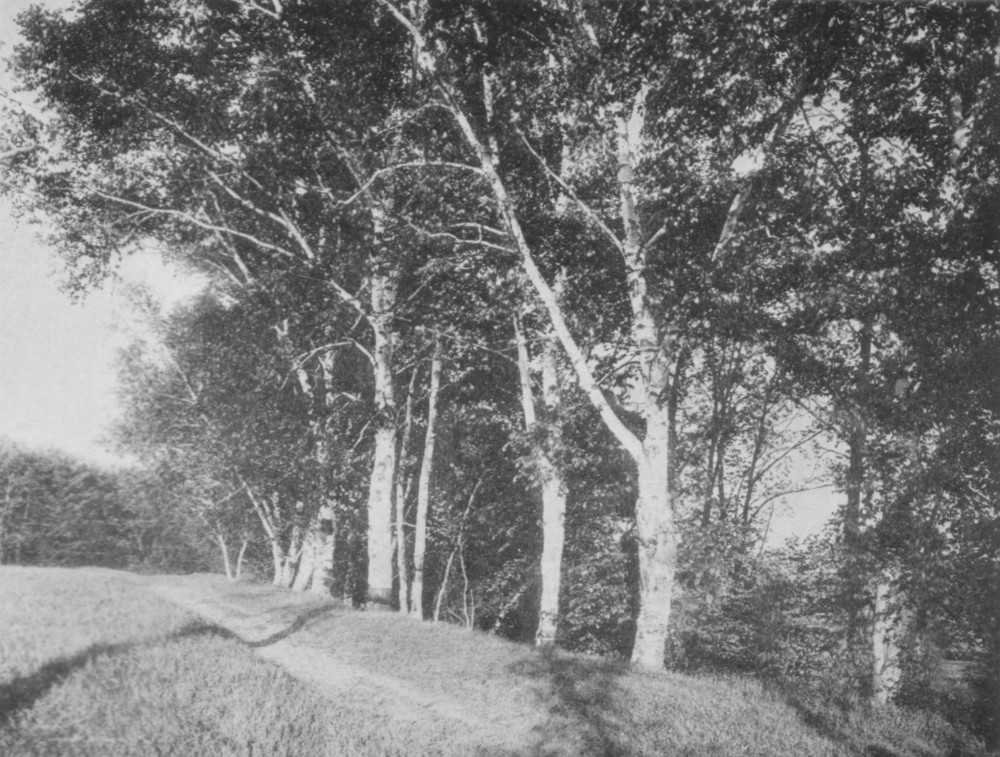 PITTSFIELD FIELD ROAD 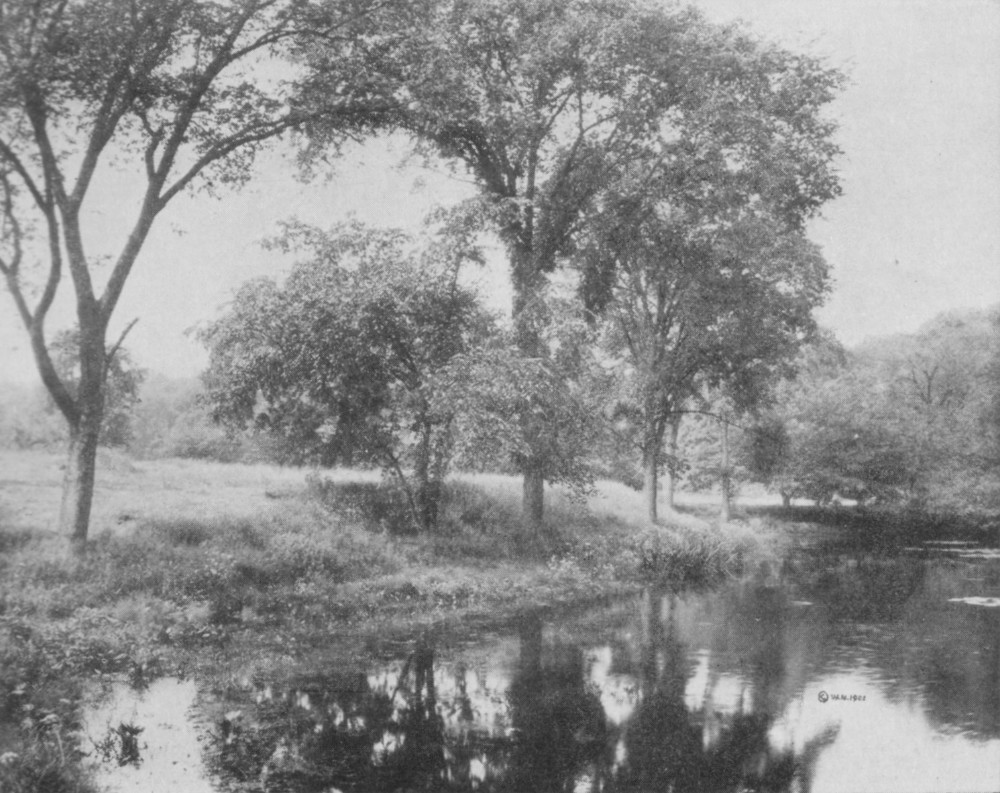 THE DREAMY SHORE - NORFOLK COUNTY 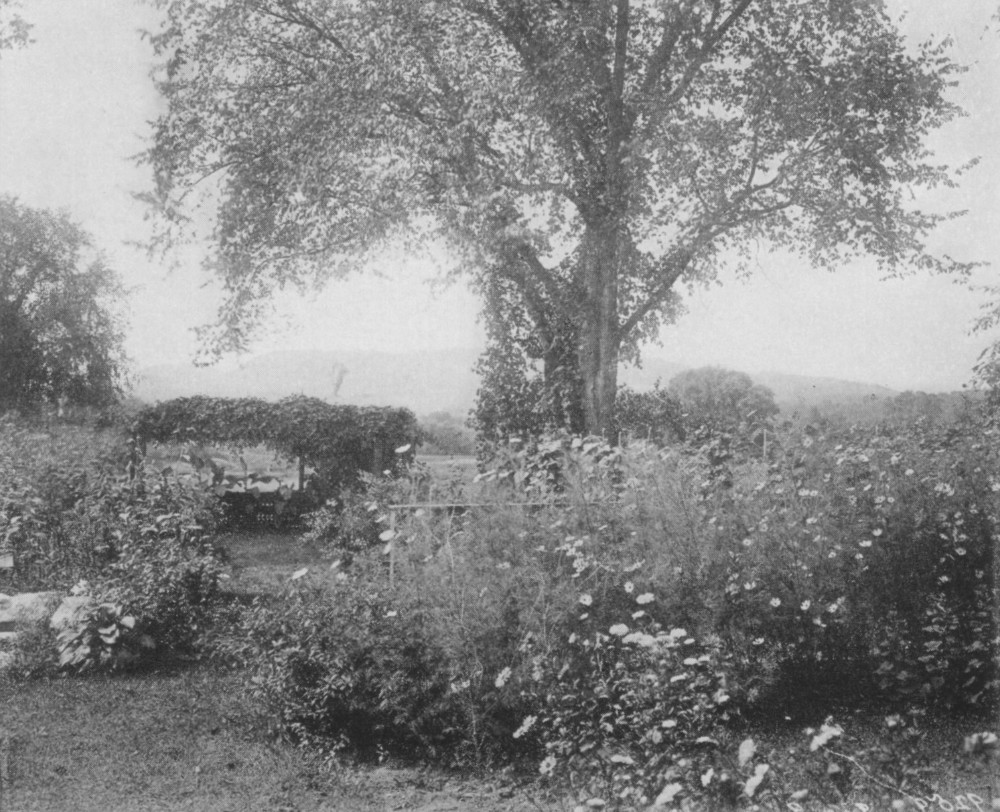 THE MANSE GARDEN - STOCKBRIDGE 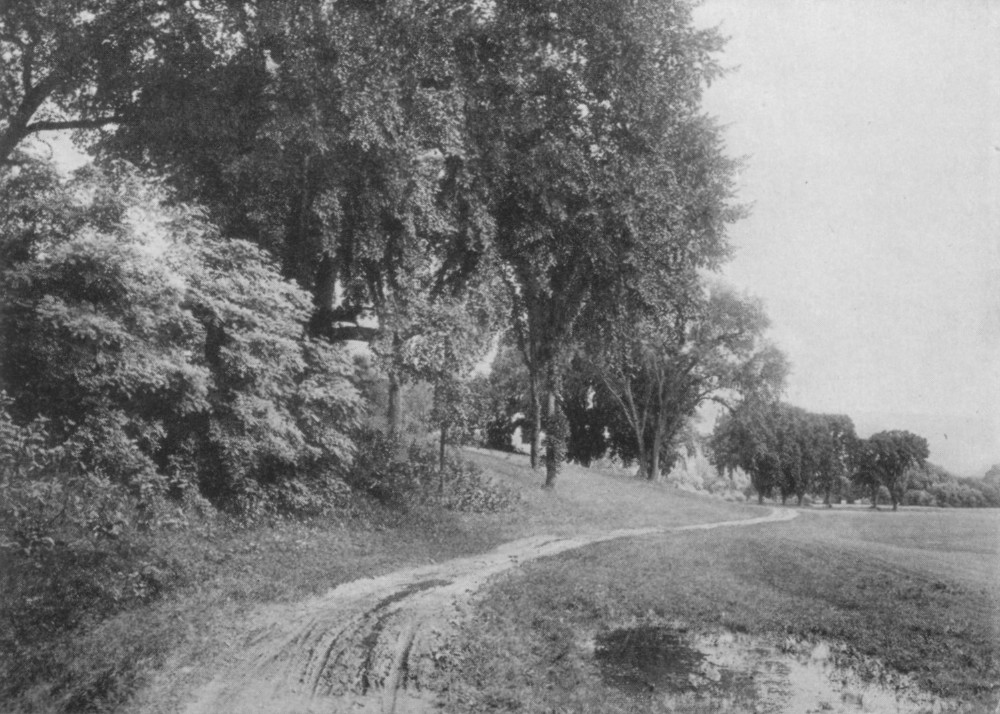 ENTERING THE STOCKBRIDGE LINKS NANTUCKET ROOF LINES We still more fear the spirit of
modernizing or repairing old houses. Already most of them have been ruined by
such processes undertaken without knowledge, taste or sentiment. There are
literally thousands of instances in which persons with more money than
discretion have repaired, restored, enlarged and decorated until there is not a
square inch visible of any old surface and until the original builder would
fail to recognize his child or would have felt disgraced by it. We have in mind
now a Massachusetts town of twenty thousand people with only two dwellings left
of a quaint, early character. SOME COUNTRY COTTAGES "MASSACHUSETTS, There She
Stands!" The title of our picture
(p. 160) may serve as a winning type of a country setting. The curve of
the road throws the house directly ahead as one approaches it, a very important
and often forgotten landscape feature. The great ash tree to the left, from
which an unsightly dead limb was removed for this picture, provides just the
right flanking border which also arches the road. The old red house on a quiet
road almost speaks to us of its successive occupants and is a kind of living
monument. The Fairbanks homestead at Dedham is
too well known to delay us long (p. 211). It is surprising that it should be so
difficult to provide for the upkeep of this ancient house with the quaintest
roof line in Massachusetts. The Leominster cottage (p. 212)
removed from the highway like a nest of a robin, loving yet fearing the step of
man, has caught our eye for many years. The Mission House at Stockbridge (p. 179),
though without the great central chimney, is, as seen under the magnificent
sweep of its protecting foliage, thoroughly satisfactory. In the process of
time perhaps it may be restored to its earlier condition. Externally its
beautiful door head is about all that is left as it was. In "Fair Old Sudbury" (p.
183) is an illustration of the effectiveness of the apple tree about the front
of the dwelling. Here a rural highway gives the vista, and the arch of the
blossoms is good, over the road and the hidden dwelling. It is a kind of
natural setting, doubtless not planned but felt, and far more appealing in an
artistic way, than something that has been arranged consciously. At "Meerholm," Siasconset
(p. 152), the appeal of a miniature effect in a cottage is secured. The open
space above the door is doubtless covered in summer by a rolling canvas, a very
effective method of securing shade when one wants it and dispensing with it on
dull days. "A Cottage Through the
Cornfield" (p. 119) appeals to the sense of plenty especially when, as in
this instance, the shocks are large and the dwelling appears small. The persons
who cultivate these fields have held them for many generations and made good
against the New England weather, have educated their children, have led in the
direction of town affairs and evidenced to the world that a man may still dwell
on his acres, even in eastern Massachusetts, and gain all that is worth while. Cottage decoration is seen carried
to its fullest extent on page 139 where Nantucket maidens chat at the gate. The
porch here is beautifully effective. Above is seen the platform where the
housewives watched for the return of their husbands from whaling voyages. GARDENS MASSACHUSETTS is particularly rich
in gardens but there is not in the usual garden the individuality required for
pictorial effects. A few like that of the Samoset Garden in Plymouth are set
forth. Another aspect appears on page 168. "A Pembroke Garden" (p.
248) is a pleasing glimpse of a garden that has run to riot, with a mellow
shingled dwelling beyond. We have already referred to Plymouth gardens. Gardening has ever been a favorite
avocation of clergymen and "The Manse Garden at Stockbridge" (p.
148), looking out over Monument Mountain, is a very successful instance of
clerical gardening. Of course, the fashionable hollyhock
must figure largely in modern gardens, and this is an instance in which fashion
and good taste meet. The large, individual flowers, like hollyhocks, are far
more effective than small flowers. The fashion of fencing in a little enclosure
in the front of the house, as on page 151, has gone out with the necessity for
it, but its charm remains. A child wandering in a garden is
singularly appropriate, as we associate the freshness of the flowers with innocence
and youth, as in "Elizabeth in Her Garden" (p. 56). The large formal gardens of the
North Shore and the Berkshires are many of them very stately and impressive but
we have not thought them as important to represent, since we try to avoid for
the most part any formal or modern effects in this work, seeking rather the
quaint and early flavor of Massachusetts life. The garden of the Wayside Inn (p.
171) is very excellent on account of the end of its vista, a gable being more
satisfactory than the side of a dwelling. The blooms that huddle about the
little wayside cottage on the Mohawk Trail (p. 288) do so much at relieving the
bareness of life that we wonder we do not see them everywhere. THE CULTURED TRAMP SEEKING beauty spots off the Mohawk
Trail we came upon a little nook beside a field road. It was sheltered from the
wind, hidden from the highway, looked out on a fair valley, was warm, beautiful
and secret. Here we discovered an oven built up of field stones, and all the
apparatus of a tramp's paradise. The irresponsibility of tramping is its
probable appeal to so many. The tramp lets the world wag. He toils not neither
does he spin nor gather into barns. Not, indeed, that we would liken him
precisely to a lily, especially to a white one, but life seems to be sweet to
him. His only dinner bell is the sense of hunger and his alarm clock is the sun
shining in his face on a summer morning. The fisherman shares in some of the
tramp's joys; also the canoeist and the walking tourist. With some
modifications the tramp's life should appeal to many of us. If we eliminate its
bold beggary, its other aspects open the world to us in many ways more
intimately than could a limousine. Lying under a tree we absorb knowledge
willy-nilly, of a kind that it is good to have. Anybody who would eat luncheon indoors during a summer journey in the country fails of his rights. He is forsaking the charms spread for his delectation. It is, we may fairly say, possible to tramp though using an automobile. It means frequent stops and side excursions on foot. The return to the car and departure from it have their pleasures vastly enhanced by the contrast. 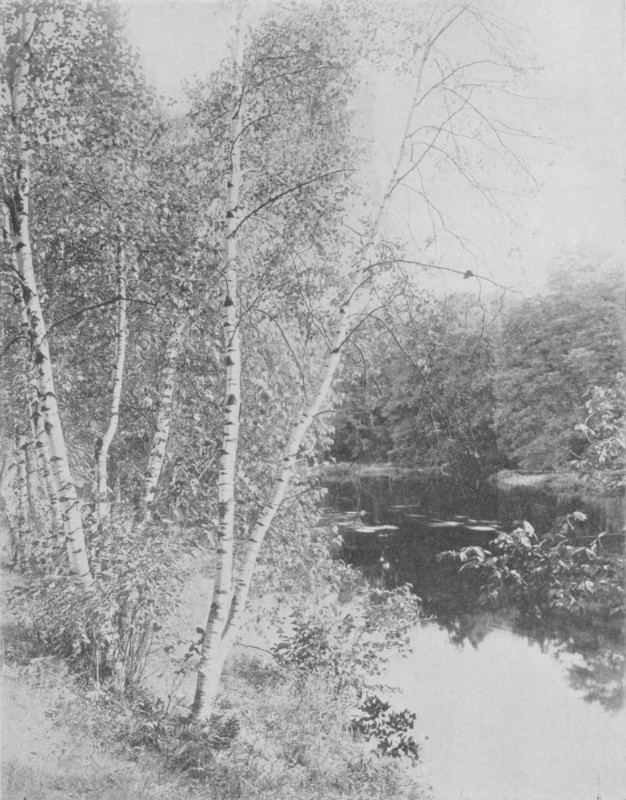 GOLDEN BIRCHES - CONCORD 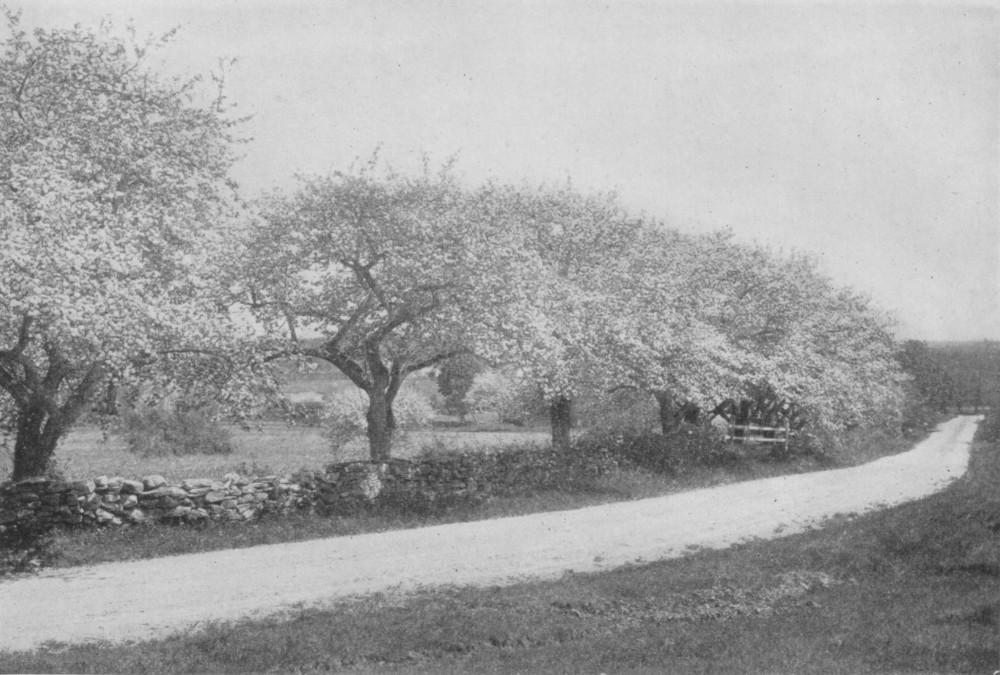 APPLE TREE BEND - HARVARD 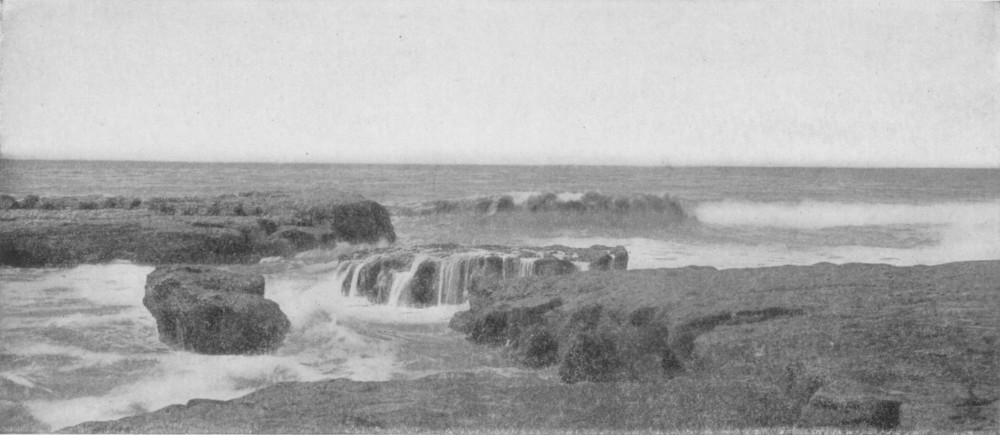 RIVULETS OF FOAM - NORTH SHORE A RAINBOW ROOF, QUINCY On an October morning if we climb
the pasture slopes of Warren we have enough of the world at our feet to fill
the eye and the heart. The air is sweet with autumn scents and rustles
crooningly in the maple leaves above us. The curious calves approach, their
moist muzzles thrust forward in the hope that we have brought them something. A
squirrel scolds us from the limb above. A chipmunk, like the shadow of a leaf,
rushes across a ledge of rock. A wise old crow mocks us from a tall pine. The
shadows of the clouds pass mystically over the Quabaug, the meadow and the
southern hills. The cornfields ripple and whisper of their plenty. The orchard
hangs full with rich, red Baldwins and yellow Bellflowers. A rambling stone
wall, built by a returning soldier of the Revolution and repaired by all the
generations of his children, separates our pasture from the orchard. In it there
is a bar-way with old mortised posts covered with lichen and greenish gray in
the orchard shadow. A spring with a tub set around it, a little below us, sends
its overflow down the run under the road to the river. The roof lines of the
farm houses are partly hidden and partly shown through the elm tops. The world
is thoroughly good. It feeds our imagination, our sense
of romance, our present need, our love for protection. It invites the roving
foot and calls irresistibly by its distant curving roads and waving tree tops. Whatever truth is in evolution it
has increased our sense of unity with the sod beneath us and the air about us.
The knowledge that we have come so far is the most splendid promise that we
shall go on, and the airplane that loses itself above us makes us brothers to
the eagle and familiars of the storm. Life is widening and deepening and
enriching. It is full enough and has a sufficient number of undiscovered
treasures and glories to challenge a superlative genius. Yet it is a tender and
wise mother to our more ordinary and limited intelligence. We find on this
pasture side all that we want and more than we need and we see an outline of a
limitless human movement. We must so far play on the sod and
with the loam; so far wander into the forests; so far wade in the brook as to
keep our joy in contact with our old world. THE SCIENCE OF AN OUTDOOR LUNCHEON WE gaze in wonder, as we tour, at the numerous motors drawn up by the side of a great thoroughfare, while their occupants eat luncheon. There in the midst of the noise and dust their outlook is unsightly. Yet they are content. How little it requires to please! The science of a luncheon en route is a nice study. One should begin a half hour beforehand to look for an inviting lane or a little used highway. Drawing off then to the side of a brook where the grass is green and there is no sound save the current on the pebbles or the call of the birds, we may spread our feast by the side of the bole of an aged oak. The brook causes a gentle breeze under the branches and the minnows rise for the crumbs that we scatter in the shallows. This is your little world for the time being. You own everything you can take in of the many shades of green that spread their living lace on the margin of the rivulet. 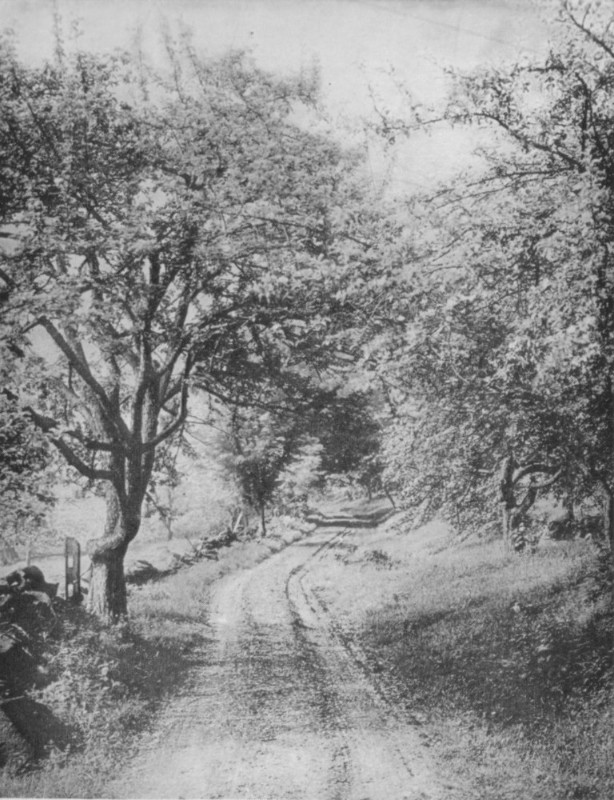 BERKSHIRE BLOSSOMS 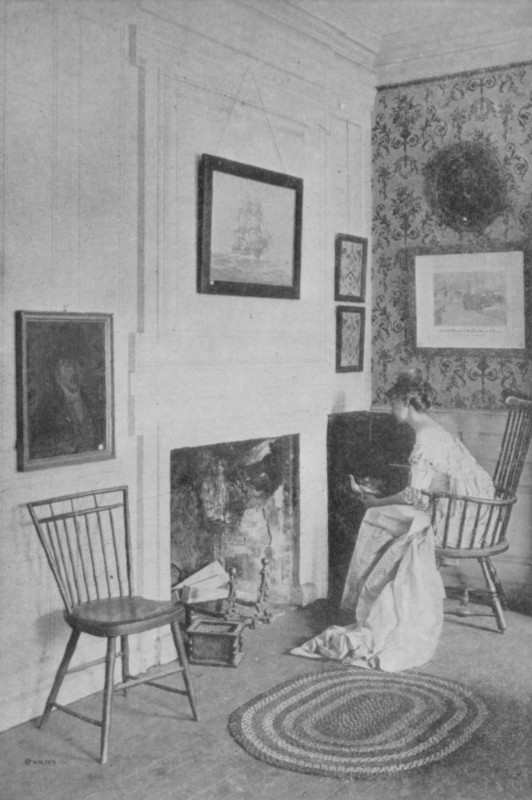 THE SILVER SAFE - LEE MANSION 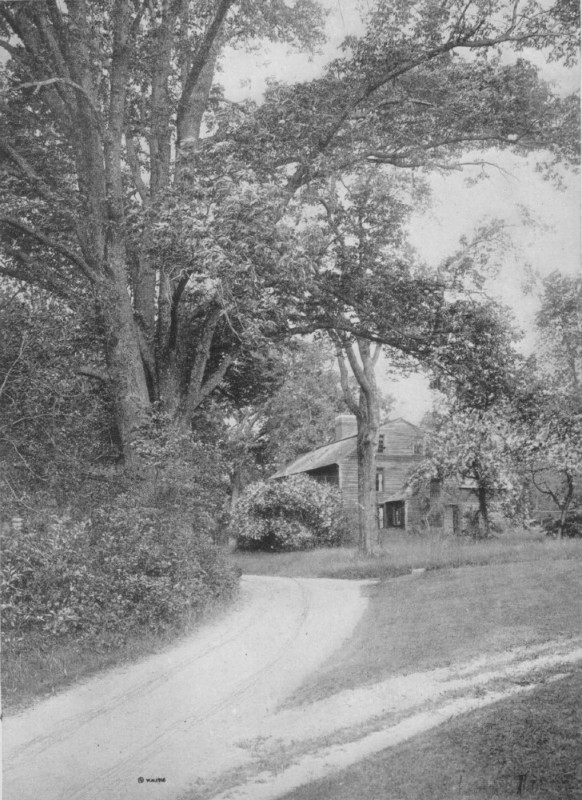 "MASSACHSETTS, THERE SHE STANDS!" - FRAMINGHAM A DUXBURY HOMESTEAD For you is all this beauty,
unrecorded by others, unappreciated by the rushing crowd, the murmur of whose
passage is dully heard in the distance. Of course, a bite into the segment of a
piece of squash pie under these circumstances has a flavor unmatched elsewhere.
One may even, as some farmer was accused by his scandalized wife of doing, eat
his pie backwards. The crusty corner is a particularly tasty bite. But then,
one is not confined to this historic and little understood diet. Although
Emerson ate it for breakfast and it became responsible for his brilliant
essays, persons of alleged culture have been known to sniff at it. A near
sniff, however, ends in surrender. A doughnut with a hole in the middle
is, as no one can deny, a curve of beauty. We have eaten enough such doughnuts
including a few of a freakish twisted curve to be filled in our dreams with
Gothic wheels, spirals and arches, not to say with gargoyles. By the edge of the wood there are
red checkerberries and their tender green leaves that give tang to the
luncheon. One might even chew a bit of sorrel if hard put to it. A retreat like this has better
artistic outlines than those shown by Corot. His district was rather flat and
comparatively unattractive. We have something here besides what the Dutch
pictures have rendered immortal. Chase and Inness have known their opportunity
and in time all will follow them, as the wise are already doing. The English
people enjoy a luncheon in the country and Americans, in spite of their
multifarious touring, are too often on their way to places perhaps better
avoided. The conditions of our climate do not always invite us out of doors, although it is a pleasure to fight the storm, but when we do find nature in a kindly mood let us by no means miss in America the wonderful charm of out of doors. Of course all thinking persons realize that this charm is not much known or felt. Witness the long row of sitters on a hotel porch. Witness the swarms in the public places of the cities even in summer. Try this test: ask two or three people at random on every street corner for a direction to some public edifice. You will find that probably half of them are strangers who came from nowhere and are going on to another nowhere. The average man lacks an aim. What does he know about the friendly crook of an elm branch? Why are poets rare? It is not a lack of intellectual power but a lack of feeling. Given the passion for anything and expression will follow. Find a new place to eat luncheon every day during the vacation season and write them all, each on its page, in your book of records. In a few years you will have, as you review your notes, a multitude of comforting or amusing or inspiring allusions. Of numerous crusades of reform what more important than this, to enrich the common life now so wretchedly poor, meagre and bare. An anchorite of the rocky desert has a wider range of imagination than many a dweller in a stately home. 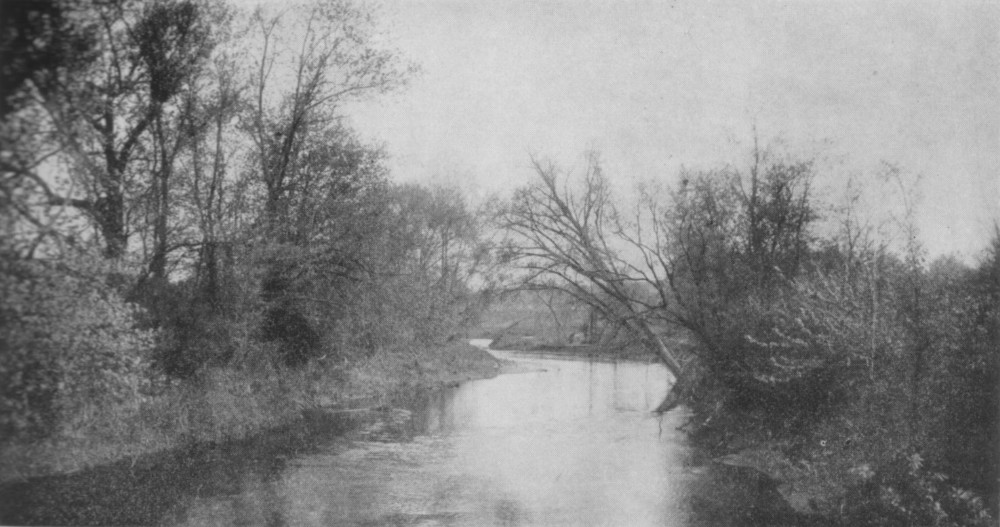 LANCASTER WATERS 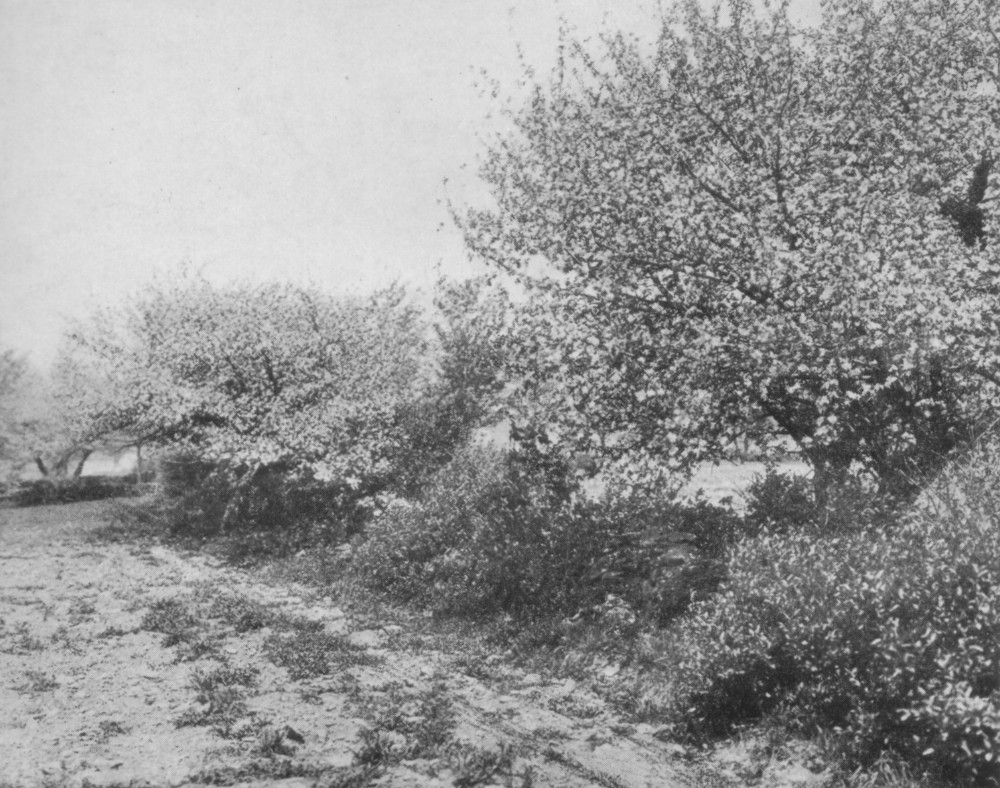 DECORATIONS OF AN OLD WALL - WORCESTER COUNTY 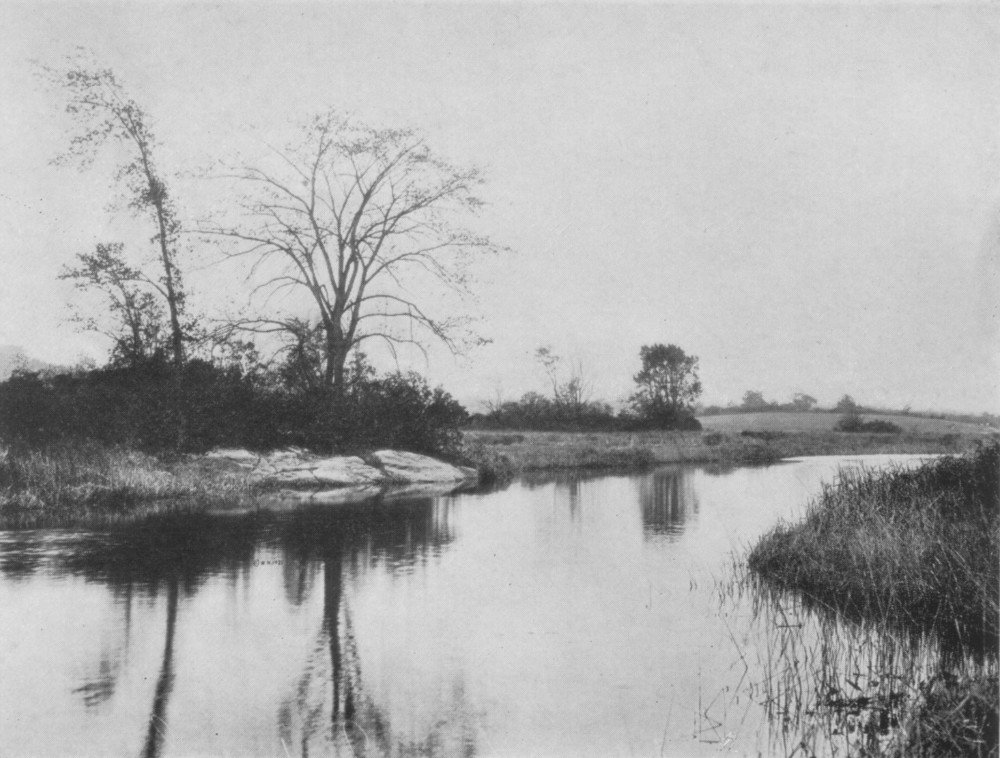 DOVER WATERS 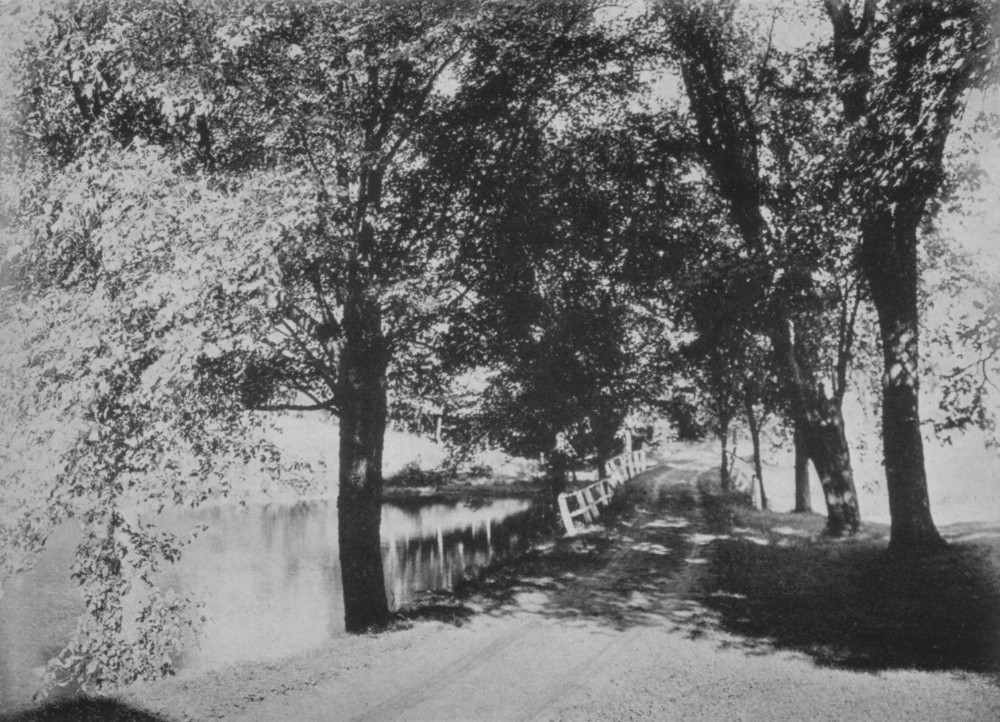 A COCHITUATE CAUSEWAY BEAUTY SPOTS HERE and there we have been
impressed by some great tree or a fine stream or a noble outlook and we mention
a few of these: As one goes into Canton from Norwood there is an old world
viaduct crossing a corner of the pool. This combination always catches the eye,
reminding one a little of the charms of Chenonceaux. Apparently nobody planned
to secure this little setting, a statement that we suppose is true of almost
all such places. Curiously enough the conscious work of man in creating beauty
spots can never escape the mark of sophistication. As one goes south from Stoughton
through the Eastons, the Ames estates in the flowering season give much charm
to the roadside. Through the woods to Wareham from
the north, following here and there the side roads, one finds much to enjoy. Southerly from Taunton, following
the west bank of the Taunton River to Dighton and Dighton Rock and thence on
through Somerset to the environs of Fall River, various water glimpses of a
pleasing character are opened. On the Connecticut River starting
from Holyoke and running to Mount Tom and thence leaving Easthampton on the
west and hugging the base of the Holyoke range, one may go on to Ox Bow and
circle right, coming back past Smith's Ferry to Holyoke. On this ride one will
get many a broad mountain and river glimpse well worth dwelling upon. Crossing the river at Holyoke to
South Hadley Falls and thence to South Hadley through the Notch to Amherst,
North Amherst and Sunderland one has much of the fair plains region of the
Connecticut. At Sunderland one crosses the river to South Deerfield, and this
short stretch affords a fine view of South and North Sugar Loaf, at the bridge.
One may then turn from South Deerfield to the Conway road, which is attractive,
into Ashfield, one of the towns set on a hill and long a summer literary
shrine, thence through Buckland to Shelburne Falls where one meets the Mohawk
Trail. The views from the trail westward
from Shelburne Falls are, while very extensive, more pleasing to view than to
picture, owing to their very extent. The outlook into the valley of Adams from
the summit is one of the finest in the state, especially when the cloud rack
stretches its changing canopy above. From Greenfield one may make a
delightful circuit to Northfield through Turner's Falls and may return through
Miller's Falls. The last of the route is the least interesting. A recently
improved road from Greenfield over the trail via Greenfield Mountain and
Shelburne to Shelburne Falls will inevitably stimulate one to select summer
sites on fine, strategic outlooks. If one could only follow the river back from
Shelburne Falls to Greenfield he would get some of the best water views in the
state, but the country is almost too rough to permit such a road being built.
One can only come down to the river here and there on side roads as at
Bardwell's Ferry. From Littleton to Groton and
Townsend through Ashby to Ashburn-ham one finds highlands with laurel, balsamy
woodlands, little lakes and mountain outlooks. Going on thence to Winchendon one may swing back to Baldwinsville, Templeton and Gardner. The route from Templeton or Gardner through Hubbardston to Princeton is not as well known as most of our roads, but with Wachusett always ahead or at some angle of beauty, the road has its charms. 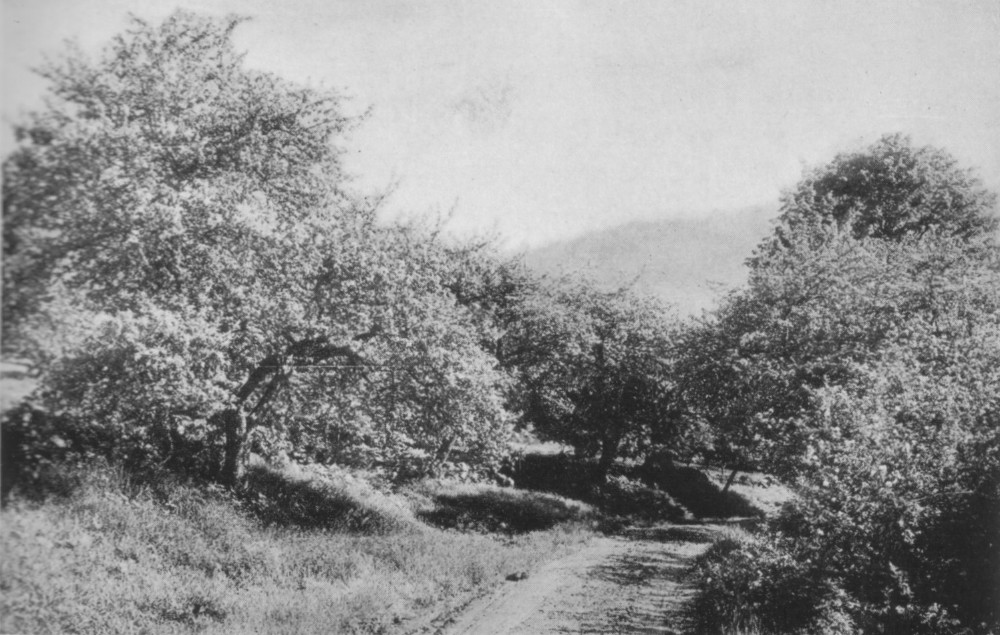 HIGHLAND BLOSSOMS - BUCKLAND 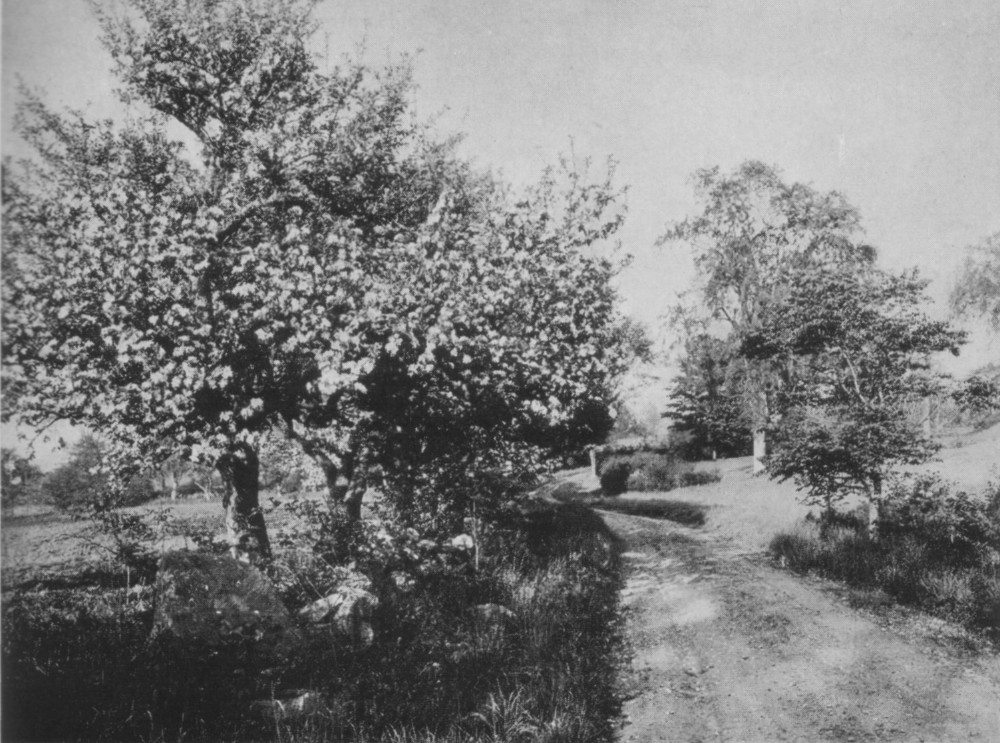 SPRING HARMONY - FRAMINGHAM 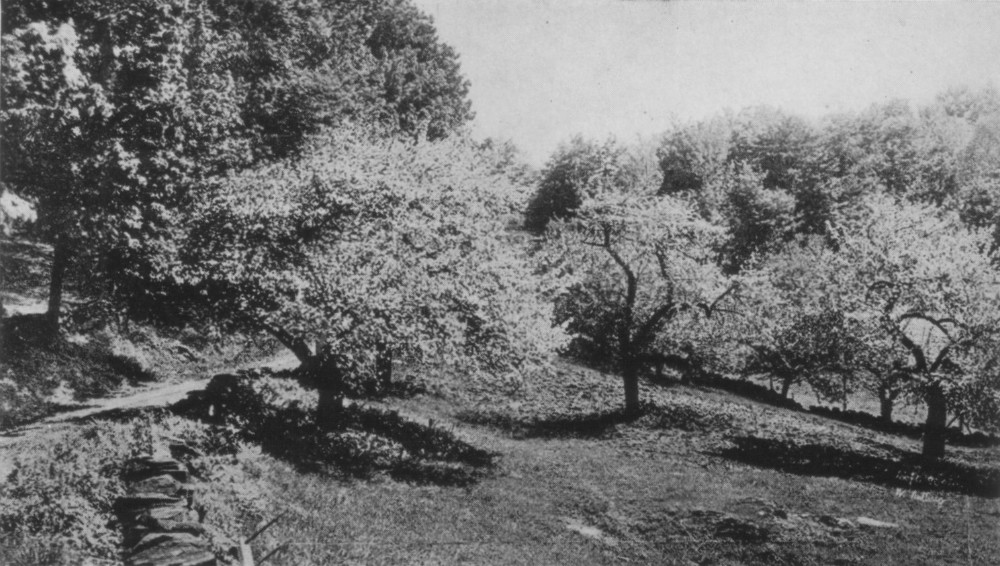 OVER THE ORCHARD - FRANKLIN COUNTY 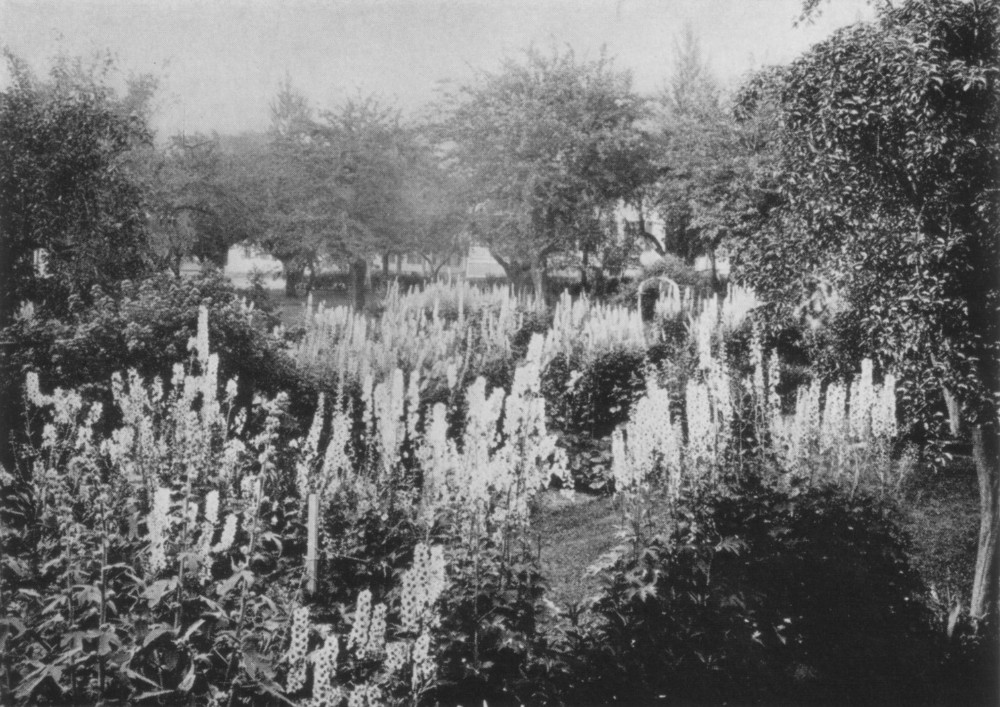 LARKSPUR GARDEN - PLYMOUTH |